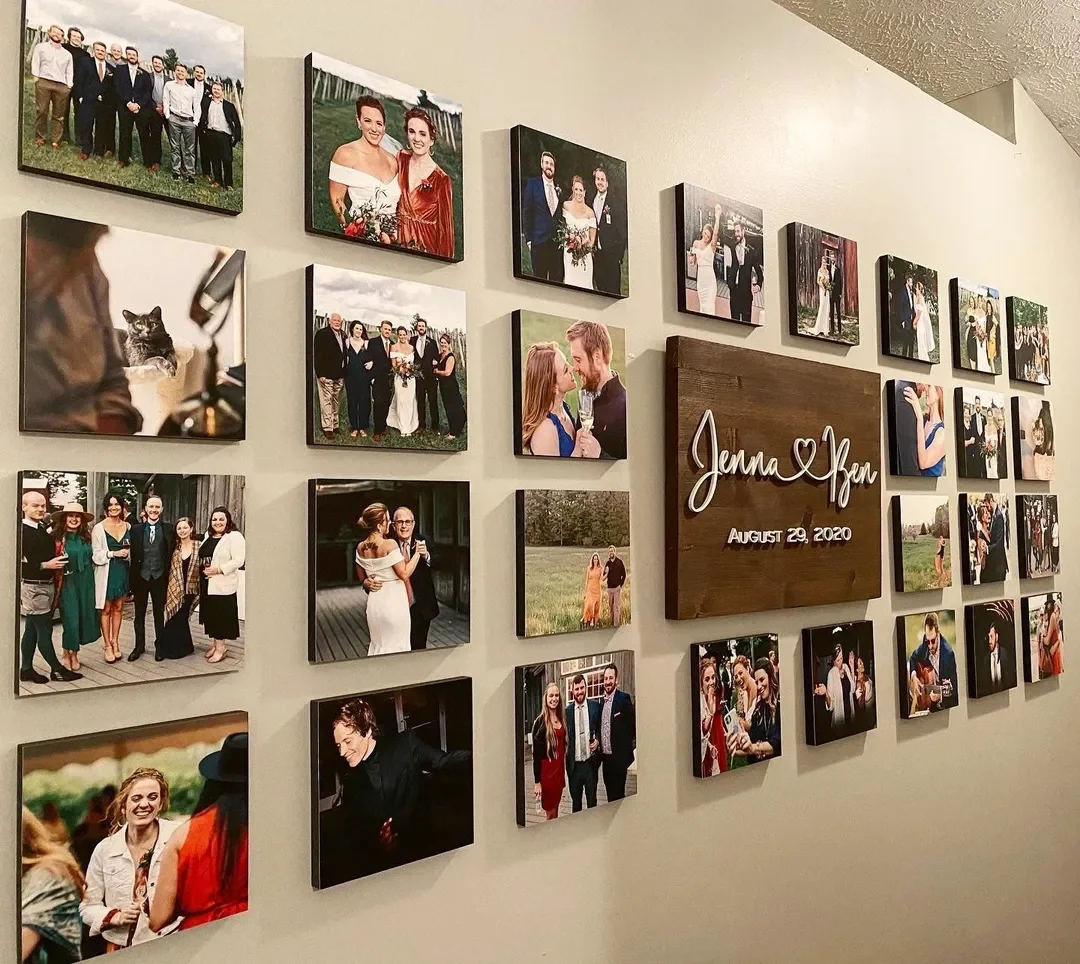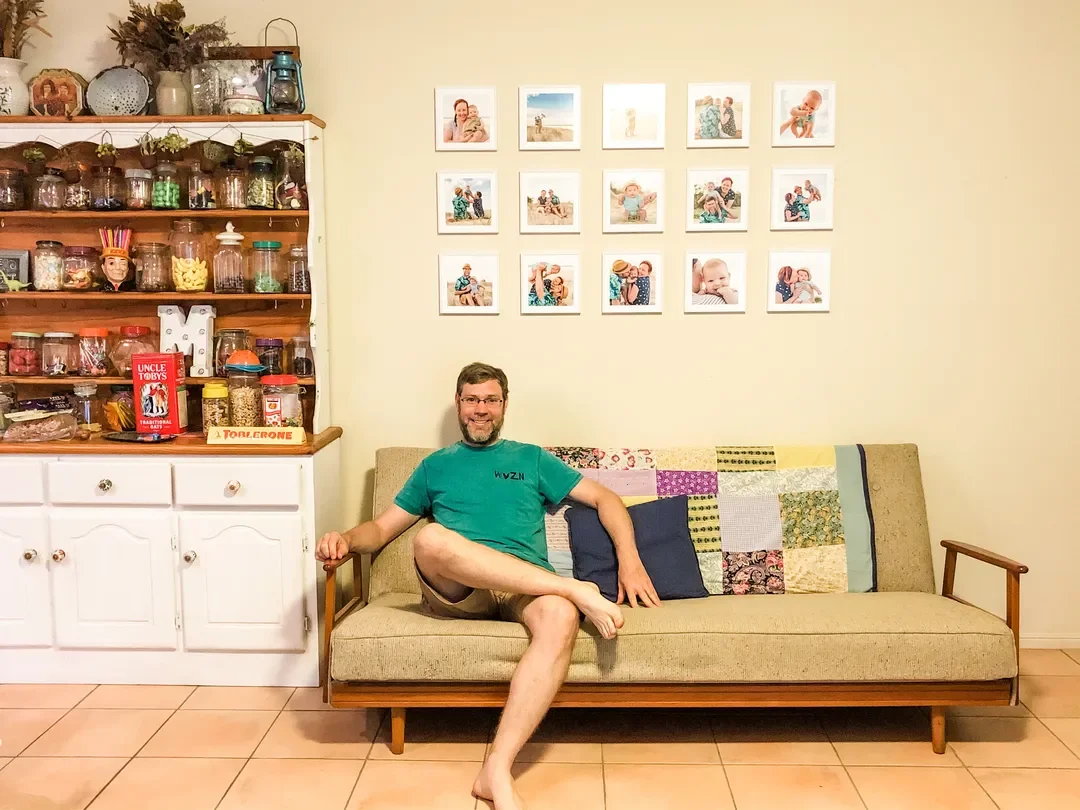Gallery Wall Dimensions: Perfect Your Home Decor Today
Key Takeaways
- Aim for gallery wall width at 2/3–3/4 the width of nearby furniture; center height at 57–60" eye level;
- Keep gaps consistent: 2" (5 cm) for small/medium frames like Mixtiles; 3" (7.5 cm) for larger frames;
- Use this formula: total width = (frame width × columns) + (gap × [columns − 1]); total height = (frame height × rows) + (gap × [rows − 1]);
- Start with ready-made templates (e.g., 3×3 Mixtiles grid = 28" × 28") and adjust counts to fit your wall.
Getting gallery wall dimensions right is half design, half math. The good news: with a few simple rules and a calculator, you can nail the perfect size, spacing, and height for any room. This guide breaks down exact measurements, formulas, and ready-made layouts (tailored for Mixtiles’ lightweight, adhesive, repositionable frames) so you can design, place, and tweak your wall without nails or stress.
Ready to create? Shop Mixtiles gallery wall kits and start designing your wall art in minutes.
How big should your gallery wall be relative to furniture and wall size?
Your gallery wall should visually “fit” the space. As a rule, make the display 2/3–3/4 the width of the furniture below, keep the composition within the wall’s middle third, and leave 6–12" of margin on the sides so the art doesn’t feel cramped.
Sofa and sectional
Place the bottom edge 6–8" above the back of the sofa. For an 84" sofa, target a gallery width around 56–63" so the frames look proportional, not tiny. This makes your wall art feel intentionally sized rather than like a small print floating in a big field.
Headboard and bed
Set the bottom edge 6–10" above the headboard. Keep total height compact (roughly 20–34" tall) so the pieces don’t loom while you rest. Black and white photos or a soft color palette can keep the bedroom calm.
Console and credenza
Match 2/3–3/4 of the console width and keep the bottom edge about 6–8" above the surface. For narrow walls, a 2×3 grid of 8" tiles gives a clean, modern look without overwhelming the decor.
Hallways and tight spaces
Go light and narrow. A single row or a vertical column makes it easy to walk by and still enjoy the art. Ensure ≥6" side clearance from corners so the gallery doesn’t feel squeezed.
What height should you hang a gallery wall on a blank wall?
On bare walls, aim to place the visual center of your gallery wall at 57–60" from the floor. Adjust slightly for how you use the room: closer to 60" in standing spaces, and a touch lower in seated rooms.
The eye-level rule
57–60" to the center aligns with museum hanging standards. In living rooms where you sit, 57–58" often feels best; in entryways and hallways, 60" works nicely.
Over furniture
If eye level conflicts with furniture, prioritize a 6–10" gap above the piece. This relationship looks intentional and keeps your gallery wall anchored to the furniture.
Stairs
Mirror the angle of the stair. Keep the gallery’s visual center rising with the steps, preserving consistent spacing between frames as you go.
How much space between frames is best?
For small and medium frames like Mixtiles, 2" (5 cm) gaps are the sweet spot. Larger frames or mixed sizes can stretch to 2–3" (5–7.5 cm). Keep spacing uniform within a grid; if you want an organic gallery, be consistent within each cluster so the design still looks intentional.
On bigger walls, you can “spend” a little more negative space to let the art breathe. In tighter nooks, slightly tighter gaps help the whole gallery read as one piece.
How do you calculate gallery wall dimensions step-by-step?
Use a simple formula. Multiply the frame size by the number of rows and columns, then add the gaps between frames. You’ll get exact gallery wall dimensions you can measure and mark on the wall before you hang.
The simple formula
Total width = (frame width × columns) + (gap × [columns − 1]). Total height = (frame height × rows) + (gap × [rows − 1]).
This works whether you’re planning photo tiles, canvas prints, or a mixed-media gallery.
Example with Mixtiles (8x8 canvas prints, 2 in gaps)
3×3 grid: width = 8×3 + 2×(3−1) = 28"; height = 28". 2×3 grid: width = 28"; height = 18". 4×4 grid: width = 38"; height = 38".
These sizes are easy to center and scale with common furniture widths.
Quick formula recap (imperial to metric)
2" ≈ 5 cm; 28" ≈ 71 cm; 38" ≈ 97 cm. If you prefer centimeters, measure your wall and frames in cm, then plug into the same formula.
Want the math done for you? Shop curated gallery walls and pick a kit size that fits your space and style.
What ready-made gallery wall dimensions work perfectly with Mixtiles?
Start with these proven templates using 8" × 8" tiles and 2" gaps. You can scale up or down by adding or removing frames while keeping the same spacing and alignment for a clean, designer look.
|
Layout |
Rows × Columns |
Overall (W × H) in |
Overall (W × H) cm |
Best Use |
|---|---|---|---|---|
|
Single Row |
1 × 3 |
28" × 8" |
71 × 20 |
Hallways, over small consoles |
|
Square Mini-Grid |
2 × 2 |
18" × 18" |
46 × 46 |
Nooks, small walls |
|
Medium Grid |
2 × 3 |
28" × 18" |
71 × 46 |
Desks, small sofas |
|
Square Statement |
3 × 3 |
28" × 28" |
71 × 71 |
Versatile centerpiece |
|
Wide Grid |
2 × 4 |
38" × 18" |
97 × 46 |
60–72" consoles |
|
Rectangular Statement |
3 × 4 |
38" × 28" |
97 × 71 |
75–90" sofas |
|
Oversize Grid |
4 × 4 |
38" × 38" |
97 × 97 |
Large bare walls |
|
Vertical Column |
1 × 5 |
8" × 48" |
20 × 122 |
Tight corners, pillars |
Stair-step layout (7–9 tiles)
Build a bounding box similar to a 3×3 or 3×4 grid, then slide tiles along a 35–40° diagonal parallel to the handrail. Keep 2" gaps and align one “hero” piece near eye level on the landing for balance.
When to go tighter or wider
Tighten to 1.5" gaps on very small walls so the gallery reads as one piece; widen to 3" on expansive walls or when mixing larger frames and art prints so the design feels airy.
How can you plan and place dimensions without making holes?
Use painter’s tape to outline the final width and height; mark the center at 57–60". Lay frames on the floor first, snap a photo, and then transfer the arrangement to the wall. With Mixtiles’ adhesive backing, you can stick, adjust, and re-stick as you refine the look. No nails, no damage.
Mixtiles work beautifully on most painted drywall; for textured walls, brick, or tile, clean the surface first and test one tile to ensure good adhesion. To clean, dust frames gently with a dry cloth; avoid harsh cleaners on the print surface to keep your wall art looking new.
If you love a mixed gallery wall, combine photo tiles with canvas prints or a single large art print as an anchor. Consistent spacing and a cohesive color story (like a black frame theme or black and white photos) will make the whole design feel curated.
What common sizing mistakes should you avoid?
These quick tips will help you get professional results the first time you hang:
- Hanging too high and ignoring the 57–60" center rule;
- Going wider than 3/4 of the furniture width beneath the gallery;
- Letting gaps drift so the grid rhythm breaks and the pieces don’t align;
- Crowding corners or ceilings: leave at least 6–12" of breathing room;
- Skipping an anchor piece in eclectic layouts: start with one larger frame or clear grid.
Whether you’re showcasing family photo memories, favorite prints, or fine art, you’ll get the best results when you measure first, then build your gallery walls one tile at a time. Don’t worry if you change your mind: Mixtiles make it easy to adjust the order, swap a piece you don’t love, and share your updated look with friends.
Sizing a gallery wall is simple once you lock in proportions, eye-level height, and consistent spacing. Use the formula to calculate exact gallery wall dimensions, pick a template that fits your furniture and walls, and mock it up before you hang. With Mixtiles’ repositionable frames, you can iterate until you get the design you want. Clean, modern, and made for your home decor.
Shop Mixtiles, choose your photos, and create a gallery wall you’ll love, no tools required.
Frequently Asked Questions
How wide should a gallery wall be over furniture?
Aim for your gallery wall to span about two-thirds to three-quarters the width of the furniture beneath it. Leave 6–12 inches of side breathing room and hang the bottom 6–10 inches above the piece. Keep gaps uniform: about 2 inches for small frames like Mixtiles.
What are the key rules for gallery wall dimensions and spacing?
Center at 57–60 inches on blank walls, or keep a 6–10 inch gap above furniture. Use consistent spacing (2 inches for small/medium frames, 3 inches for larger). Align edges or the visual center, and plan with tape and a simple width/height formula before placing Mixtiles.
What is the two-thirds rule, and how do I apply it?
The two-thirds rule says your gallery should be roughly 2/3 the width of the furniture below. Example: over a 90-inch sofa, target about 60 inches wide. With Mixtiles, a wide 2×6 or 2×7 grid (2-inch gaps) lands near that width without overwhelming the room.
What is the 57–60 inch eye-level rule for hanging pictures?
It places the visual center of your gallery at about 57 inches from the floor (typical eye level). Use 57–58 inches in seated rooms and up to 60 in standing areas. Over furniture, prioritize a clean 6–10 inch gap even if you adjust the center slightly.



Be first to know — deals, news & decor ideas.
By clicking you agree to the Terms of Use & Privacy Policy
